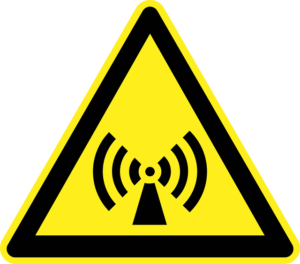 As electromagnetic fields permeate many professional activities, legislation was needed in order to regulate its associated risk hazards. Hence, the European Commission has put forth the Electromagnetic Fields Directive to address all known direct biophysical effects and indirect effects caused by electromagnetic fields, in order not only to ensure the health and safety of each worker on an individual basis, but also to create a minimum basis of protection for all workers in the Union, while ensuring no competition distortion would take place. The Directive has set mandatory exposure limit values and is bound to be implemented, under national legislation, in all EU countries by July 2016, meaning that many companies have now the challenge to address its requirements or risk receiving fines.
As electromagnetic fields permeate many professional activities, legislation was needed in order to regulate its associated risk hazards. Hence, the European Commission has put forth the Electromagnetic Fields Directive to address all known direct biophysical effects and indirect effects caused by electromagnetic fields, in order not only to ensure the health and safety of each worker on an individual basis, but also to create a minimum basis of protection for all workers in the Union, while ensuring no competition distortion would take place. The Directive has set mandatory exposure limit values and is bound to be implemented, under national legislation, in all EU countries by July 2016, meaning that many companies have now the challenge to address its requirements or risk receiving fines.
Given the pervasive nature of electromagnetic fields in welding, most metalworking companies are now faced with the need to comply with the Directive, and ensure the safety of their professionals. This means that Health and Safety Officers and Welding Coordination personnel shall be properly equipped to respond to that need. The Erasmus+ HS-EMFW (Health and Safety in Electromagnetic Fields in Welding) project will fill this gap by delivering a European qualification standard.
The main project innovation is the creation of a new professional profile, the Electromagnetic Fields Health and Safety Officer in Welding (EF-HSOW), which will fulfil an actual market request in terms of qualified personnel, supporting European Union’s targets and the objectives of the Erasmus+ Program of increasing the labour market relevance of VET and reducing skills mismatches and shortages. Given the fact that the profile may be applied within all of the EU Countries, it will also strongly contribute to the workforce’s mobility.
This project will then produce a Vocational and Educational Training (VET) profile, training curricula and training materials, all aligned with the new European Systems for Qualification (EQF and ECVET). The contents and tools will be tested and developed for 3 partner countries (Italy, Austria and Portugal), considering the feedback from the target groups, experts, policy makers and other regional/ national stakeholders. The project will also actively pursue innovative ICT training tools, enhancing digital integration in learning, teaching, training and youth work. Multiplier events will take place, aiming at testing the developed curriculum.



